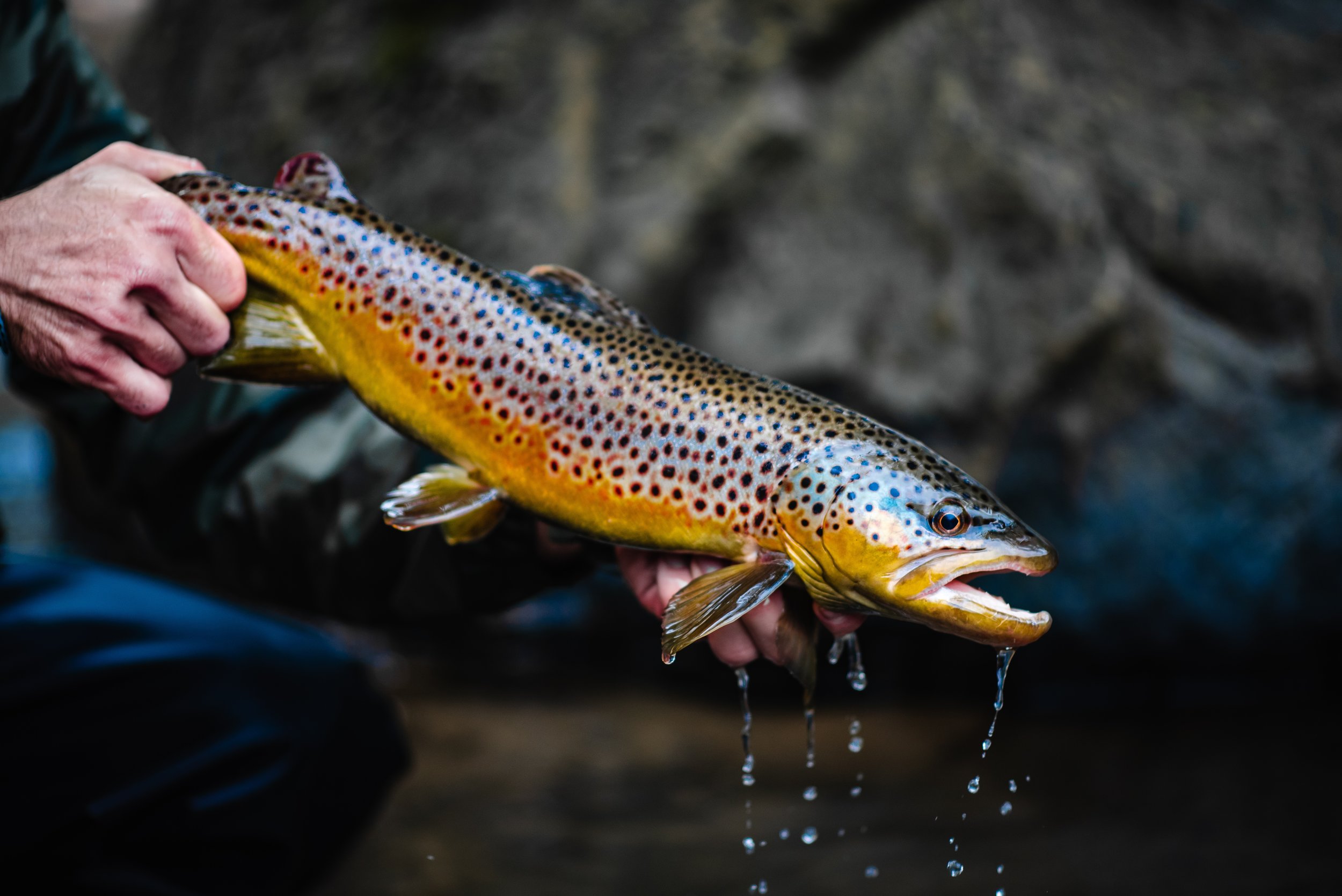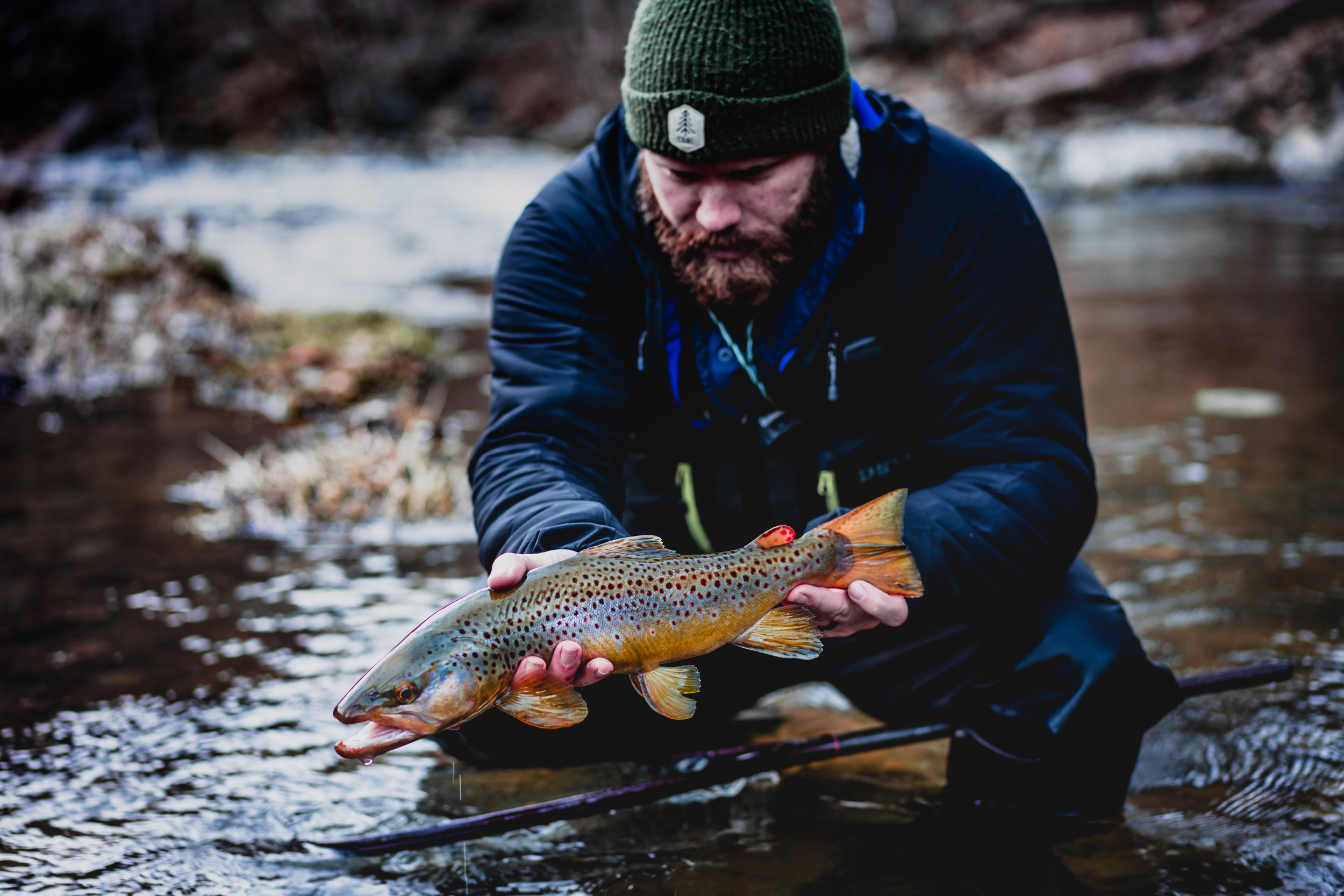First Impressions Matter
When I first started fly fishing all I heard from other fly fisherman was that if I wanted to catch more fish I had to match the hatch. Match the hatch simply means you should be throwing flies that are similar to the ones currently in the air or water. Admittedly, it is pretty good advice that will produce consistent results. Match the hatch is at the core of a lot of fly anglers, but not me. As I have progressed as a fly angler, I have found that one thing above all else produces the greatest number and quality of fish. Presentation.
For the first three years of my fly fishing journey I was a typical Western North Carolina fly fisherman. I primarily nymphed under a bobber, yes a bobber, calling them “indicators” or a “suspension nymph rig” is a pretentious attempt of elevating fly fishing over traditional fishing. When I wasn’t nymphing I was throwing a dry-dropper rig. Match the hatch served me reasonably well during this time period. It wasn’t until I started to learn how to euro-nymph that I began to realize that my choice of fly was less important than how the fly appeared to a trout. The biggest advantage of euro style nymphing is it provides a perfect dead drift, the ultimate presentation. My conversion to presentation over fly selection was solidified further when I examined the confidence flies used by competitive anglers. Most confidence flies that competitive anglers use are complete nonsense. Nonsense in the way that the flies do not imitate any specific macro-invertebrates in the water column. Essentially, these confidence flies do not mimic one specific bug but they could be mistaken for several different species of bugs instead. The best example of this is the waltz worm fly pattern; the fly mimics nothing specifically but almost all freshwater invertebrates give off a similar silhouette at some point in their life cycle. The prevalence of impressionistic flies in competitive angling told me that matching the hatch wasn't the key to their success but it was the flawless presentation that the euro style offered that was instrumental to their victories on the water. Although it was through euro-nymphing that I came to this realization, it is still applicable to traditional nymphing and dry fly fishing as well. How your flies are presented, regardless of your preferred method of fishing, will garner you better results than just matching the hatch.
If you follow me on Instagram then you know that I love to fish for big brown trout in small water with streamers. However, many of my followers make the mistake of thinking that streamer fishing is the only method I use. I will do anything to catch trout, whether that means throwing a dry, a nymph, euro nymphing, or a streamer. I just happen to love streamers the most. Surprisingly, streamer fishing has taught me a lot about the importance of fly presentation. It is easy to think of streamer fishing as one of the more mindless types of fly fishing. I get it, to the uninformed observer a streamer fisherman is simply casting out, retrieving the fly, covering a lot of water, and waiting for a follow or a take. Streamer fishing can certainly be exactly that if there is not thought or purpose behind the actions being taken by the angler. Streamer fishing from a drift boat is anything but a thoughtless process. The streamer is selected based on its size, coloration, and movement. As soon as a cast has been sent out, the angler should be considering where their fly is traveling as they retrieve, its appearance in the water, and the structure you are passing the fly through, as well as the speed of your retrieval. While all of this is taking place during the cast/retrieve the angler must be watching downstream for the next area they are going to target on the next cast. It is a lot going on at once. Streamer fishing while wading smaller water is similar but on a slower scale. You can be more deliberate with what you are doing and take the time to ensure your streamer is presented in exactly the way you want. How the streamer is presented to fish is what makes them strike, more so than the color of the fly or the size of the fly. If the retrieve is too fast, or too slow the fish will not eat. If the streamer does not achieve proper depth, or pass through structure that serves as an ambush area for the fish they will not eat. However, if the streamer is passing through structure at the right pace with a retrieve that makes it appear injured or fleeing you are much more likely to hook up with a giant. Just like with traditional nymphs or dry flies, the presentation of a streamer will get you more eats than if your streamer perfectly matches the bait fish in the water. Trout feed based on opportunity and convenience, especially when it comes to streamer fishing because it is a high risk high reward situation for the trout. They can potentially gain a lot of calories for a bit more effort, however if they miss the streamer they have expended more energy and gained none in return. As such, you need to present the streamer in such a way and in such a place that it makes the trout take that caloric risk. Presentation is key.
The presentation of your flies or streamers is directly correlated with your success on the water. By nature, trout are opportunistic feeders. Meaning they are concerned with expending the fewest calories possible to obtain the most calories possible. They are caloric machines, constantly calculating energy output versus energy input. Trout are creatures of convenience. If there are an abundance of a certain bug, lets say a BWO hatch, the water column is saturated with these bugs, conveniently so for the trout. The trout do not have to move very much to feed on the most populous bugs in the water column, but that does not mean they wont eat other insects. A well presented fly that makes for an easy eat, followed by a good drift, will usually entice a trout to eat due to their opportunistic nature. In this way presentation supersedes simply matching the hatch.
I am by no means hating on matching the hatch, all I am saying is it is not the end all be all of fly fishing. There are other variables that you should also consider when making your decisions on the water, variables like presentation. There is no reason you cannot combine the two for fantastic results. However, do not be afraid to throw something different as long as your presentation is good. A well presented/ drifted stonefly, when there are not many in the water, is a lot of calories for a little work which is an opportunistic feeders kryptonite. Fly fishing for trout is like meeting your girlfriend's parents for the first time, first impressions matter. The first cast you put into a hole or a run is usually your best chance at hooking up with a fish. Presentation when used in conjunction with other traditional fly fishing modalities will make you a better angler.



